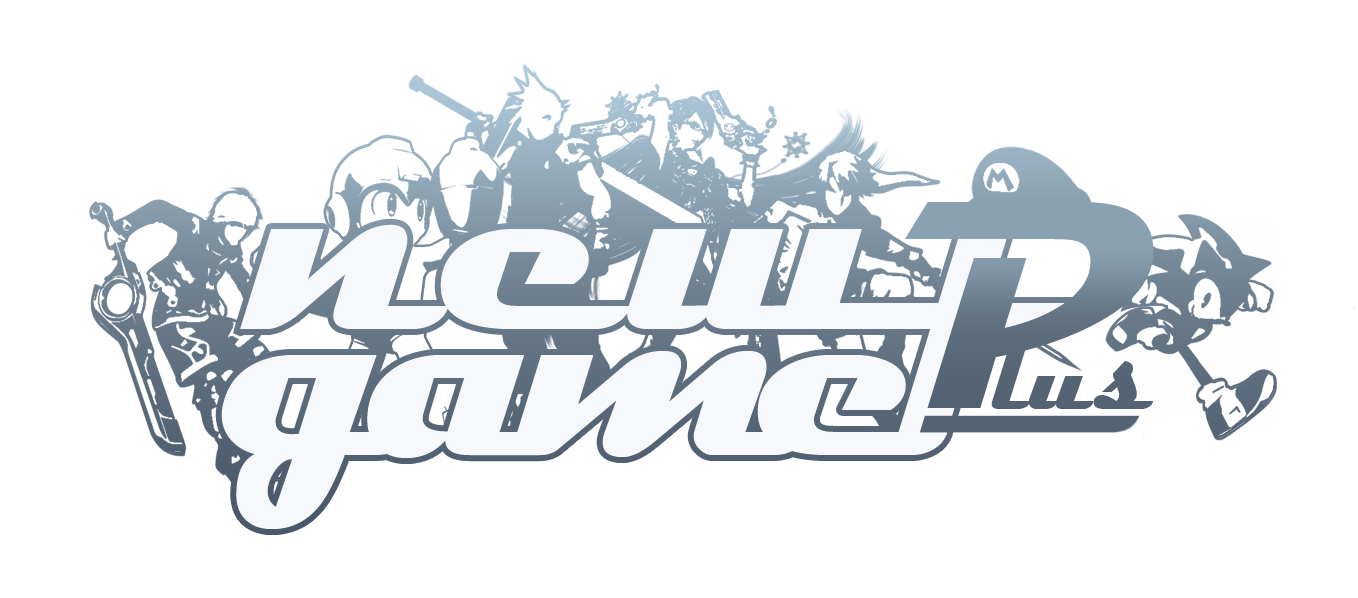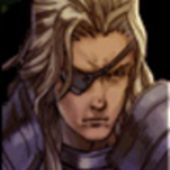BlazBlue: Chrono Phantasma is the third installment in the BlazBlue series, following Calamity Trigger and Contimuum Shift.
BlazBlue is the spiritual successor to the Guilty Gear franchise, and, as such, is also developed by Aksys Games (also known as Arc System Works in Japan).
As a fighting game, Phantasma is in a class all its own. I don't mean it's the best fighting game out there, but I do think you'd be hard pressed to find one that could stand toe to toe with it besides Street Fighter. BlazBlue fills the void that Guilty Gear left in its wake.
Before I begin, I'd like to state that the reason I clarify that I'm reviewing the Vita version isn't because of extenuating issues with the Vita version (like with my Battle Royale review), but rather because the Vita version is awesome, and the console version has a bit -- not much, but some -- more content.
So let's check it out, shall we?
Characters
Oh, man. Where do I begin? You start out with 23 playable characters, one character unlockable by clearing Story Mode, and currently an additional four via DLC.
Each character has a distinctive battle style, there are no clone characters. The closest thing to clone characters are Relius and Carl Clover who do use the same fighting style, but they're also Father and Son. It can be argued that Hazama and Terumi have similar styles as well, but they're effectively the same person.
This doesn't just extend to how the character plays as far as commands go, some even have their own mechanics, but I'll get into that later.
Story
This is probably one of the last things you'd expect to see in a fighting game review, but make no mistake, this game has an absolutely amazing story. The story mode of Phantasma plays out in a Visual Novel style format with some fights spread out here and there, and a few choices.
There are three different storylines, all of which are connected, and they all kept me absolutely enthralled from start to finish. Every character makes an appearance, everyone is very memorable, and the storyline itself is very, very intricate.
As a newcomer to the series I was able to dive right in and pick up most things by just following the story of Phantasma, relying on the wikia to fill in the few blanks I had left once I was done. I know I'm gushing, but I fucking loved the story.
Mechanics
The mechanics of Phantasma at its core are very similar to Guilty Gear and other fighting games, so I'm gonna skip the basic ones and cut to the chase.
The differing mechanics I mentioned earlier usually involve some variant of the Heat Gauge, sometimes completely replacing it. Not all characters do this, but I'm not going to talk about all of them that do. Just enough to give you sort of an idea on how it changes.
Hakumen has what's called the Magatama Meter instead of the Heat Gauge. You have up to eight Magatama, with one being generated each time the meter fills. The meter fills (slowly) by doing absolutely nothing, but of course fills faster when you're fighting. The Magatama are spent with certain attacks, all of which have a visual cue on screen. This alone drastically alters how he plays, as Magatama management becomes important.
Another example is a character that I main, Izayoi. Izayoi has two modes, her normal mode, which has a defensive playstyle, and her Gain Art mode. In her normal mode, you build Zero-Type stocks, and in Gain Art, you spend them to perform special abilities while in that mode. A lot of the special moves you spend stocks to perform in Gain Art mode you can do in normal mode, so what's the point?
Well, the point is that in Gain Art mode, a lot of your moves change and your dash is greatly enhanced, making her play very differently; it switches her from a defensive playstyle to a highly aggressive playstyle with the push of a button.
Going back to the default Heat Gauge though, it primarily serves two functions: your Distortion Drives and your Astral Heat.
Distortion Drives are your bread and butter special moves. All Distortion Drives use up 50% of your Heat Gauge to activate, and some of them change when you're in Overdrive, but I'll get to that in a minute.
Astral Heat is, basically, your fatality. Astral Heats have three conditions for activation: it must be a match-deciding round (both you and your opponent have won one round, and it's two rounds to win, for example), the enemy must have less than 35% health, and you need a full Heat Gauge. When all of these conditions are met, your character's portrait will begin to pulse, letting you know you can use your Astral Heat.
Astral Heats are instant kill moves, but more to the point they're like this game's teabag. You're not going to have a full Heat Gauge very often, and almost never under those conditions unless you're trying for it. And even if you do, it's usually more practical to fire off a combo, unless it's something like Noel's Valkyrie Veil; a counter.
Overdrive is a new mechanic in Phantasma. When activated, it increases the damage you dish out, and grants access to new moves unique to the character. Normally, this lasts around 5 seconds, with the duration increasing the lower your health is. Your Overdrive will fill up over time, so it's no longer set as in previous games.
If you're getting comboed pretty heavily and need an escape, however, you can sacrifice your Overdrive and instead use a Burst to get rid of some of that offensive pressure and knock your opponent back. Baiting Bursts is a very good strategy, since you're more susceptible to combos until it recharges.
Stylish Mode is a new addition to the game. Basically, Stylish Mode is an alternate playing style that's tailor made for people who've never played a fighting game or just outright suck at them. It makes pulling off those awesome combos much, much easier. It's for the kind of player who just wants to jump right in and have fun instead of going through the process of learning (or if you're thinking of trying out a new character; even I use Stylish from time to time).
I personally think it's a really great addition, as when it comes to multiplayer, Stylish puts you at more of a disadvantage because you're very predictable. There's really nothing bad I can say about it.
As a sidenote, the in-game tutorial is really very good, it explains all of this and much more very, very clearly.
Visuals
I think this is the first time I've had a section of my review be specifically for talking about the visuals, but this game deserves it. Phantasma is an absolutely gorgeous game.
From the high-definition sprites to the vibrant, hand-drawn stages, it really makes this game stand out in comparison to contemporary 3D fighters on 2D fields.
The visuals in this game are stunning.
Game Modes
Phantasma definitely has no shortage of game modes, that's for sure.
In addition to your staple Arcade and V.S. Mode, there's Score Attack, but the ones I want to touch on are the Unlimited Mars, Abyss, Highlander Assault, and Challenge modes.
Unlimited Mars mode is.. well... the insane mode of this game. I started it up before writing this section just to see how it plays, and I got absolutely dominated with Noel, the character who I probably have the most time on. I'm convinced that EVO players train with a combination of this and online play.
To put it more simply, Unlimited Mars pits you against ten extremely intelligent opponents where you try to get a high score. If you're connected to PSN, you can post your scores.
Abyss Mode is something I think is pretty cool. It's basically a survival mode with RPG elements thrown in. You have four different stats -- Attack, Defense, Speed, and Heat -- that you can raise as you travel through different floors. There are several different "dungeons" to choose from. The beginning ones are ~10 fights deep, but they can go into the hundreds (possibly even the thousands).
One interesting thing is that randomly during fights, you'll be interrupted by a new challenger, in a way not altogether different from Smash Bros. When you defeat this new challenger (who has increased stats, by the way) you restore more HP than you usually would and choose from four prizes.
If you don't make it to the end of your dungeon, you only keep half the cash you gained while down there, but if you finish it, you get the full take.
Challenge Mode is pretty much what you'd expect. They're 30 missions per character with increasing difficulty levels. I wish more games would do stuff like this, because it's something that I personally really enjoy.
I know that I said I'd talk about Highlander Assault mode, but due to its spoiler nature, I'll just say that it's a fun little mode where you can fight the last boss in the story mode over and over again. It is, of course, unlocked upon completion of story mode.
As an addendum, the Network mode seems to be pretty solid as well. The Vita doesn't have a lot of players (most are on the PS3) but the netcode is done rather well; I wasn't getting much lag at all.
Unlockables
This game definitely has no shortage of unlockables. There's one character -- Kagura Mutsuki -- to unlock, but I really do love all of the artwork that's unlockable, and especially the character palettes. There are 24 palettes for each character; 1-6 are unlocked by default, 7-16 are unlocked by buying them in the gallery, and everything past that is DLC, though 23 and 24 are free of charge.
Difficulty
I really enjoy the difficulty of this game. The skill floor is low, so it's easy to get started, and the skill ceiling is really, really high, as evidenced by my crucifixion at the hands of Unlimited Mars mode.
The difficulty primarily stems from knowledge of inputs and how your opponent plays, along with execution. The inputs are precise, however not so precise that yours truly can't do it. If I can do it, anyone should be able to. I suck at fighting games.
The Bottom Line
I've looked, and looked, and looked, but I just can't find anything negative to say about this game. It's absolutely phenomenal. I always say that no game is perfect, so I never give a perfect score, but I have been proven wrong. I can't find any grievance with this game, no matter how small.
Metacritic Rating: 8.6
NGPlua Rating: 10/10
Edited by Kyrios




